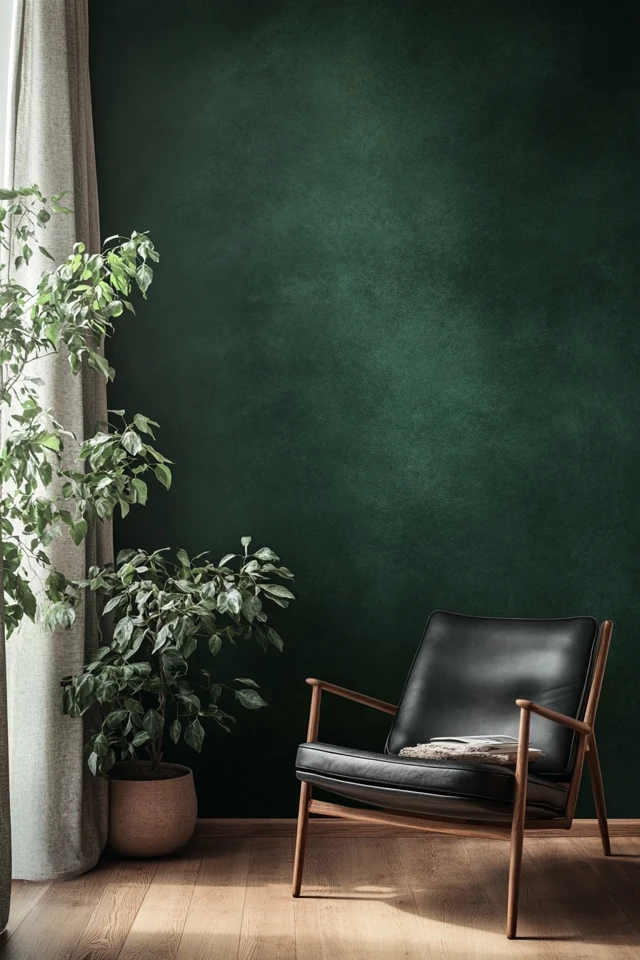Mid-century modern design and Scandinavian style share a love for simplicity, functionality, and clean lines, making them a perfect pairing for a beautifully cohesive space. While mid-century modern embraces bold shapes and statement pieces, Scandinavian design leans into a softer, cozier approach with natural textures and a sense of warmth. The result? A space that feels both stylish and inviting.
I remember when I combined these two styles in a client’s living room. They adored their mid-century modern furniture but felt the room lacked warmth. By layering Scandinavian-inspired textures—think soft throws, neutral rugs, and natural wood accents—we achieved a balanced look that felt contemporary yet comfortable.
In this guide, I’ll share tips and ideas on how to blend these two timeless aesthetics seamlessly, creating a space that’s functional, stylish, and undeniably cozy.
Why Blend Scandinavian and Mid-Century Modern Styles?
Both styles prioritize:
- Functionality: Furniture and decor are practical, not just decorative.
- Simplicity: Clean lines and uncluttered spaces dominate.
- Natural Materials: Wood, wool, leather, and stone create a grounded, organic feel.
- Timelessness: Both styles feature pieces that never go out of fashion.
By incorporating Scandinavian influences into mid-century modern spaces, you add warmth, texture, and comfort to an already stylish foundation.
Key Elements of Each Style
Mid-Century Modern
- Bold, geometric shapes.
- Iconic furniture like Eames chairs and tapered-leg sofas.
- Rich, warm woods (walnut, teak).
- Earthy tones with pops of color (mustard yellow, deep teal, burnt orange).
Scandinavian
- Minimalism with a focus on functionality.
- Light, neutral color palettes (whites, soft grays, muted pastels).
- Cozy textures: wool, sheepskin, and linen.
- Natural light and a sense of hygge (coziness).
1. Start With a Neutral Base
Scandinavian design thrives on light, neutral colors as a foundation.
How to Incorporate It:
- Paint your walls in soft whites or pale grays to create a bright, airy backdrop.
- Choose rugs in neutral tones, such as off-white, beige, or light gray.
- Let mid-century modern wood furniture (like a walnut credenza) stand out against the neutral palette.
Pro Tip: Use the walls and floor as a canvas to highlight bold mid-century furniture and decor.
2. Mix Woods for Warmth
Both styles celebrate natural wood, but mid-century modern tends to favor darker tones like walnut, while Scandinavian leans toward lighter woods like oak.
How to Incorporate It:
- Blend warm mid-century wood tones with lighter Scandinavian woods. For example, pair a walnut coffee table with oak side tables.
- Add a natural wood bench or stool to soften the space.
- Use wood decor elements like bowls, picture frames, or trays.
Pro Tip: Avoid overloading the room with different wood tones—stick to two or three complementary shades.
3. Incorporate Cozy Textures
One of the hallmarks of Scandinavian design is its ability to make minimalist spaces feel warm and inviting through texture.
How to Incorporate It:
- Drape a chunky knit throw over a sleek mid-century sofa.
- Add pillows in soft, neutral fabrics like linen, wool, or velvet.
- Use a sheepskin rug or faux fur to soften an Eames lounge chair or accent bench.
Pro Tip: Layer textures to create a sense of depth and coziness without adding clutter.
4. Simplify the Color Palette
While mid-century modern loves bold accent colors, Scandinavian design opts for a more subdued, harmonious palette.
How to Incorporate It:
- Keep bold colors (mustard yellow, burnt orange) to a minimum and balance them with softer hues like pale blue or sage green.
- Opt for monochromatic or tone-on-tone decor, such as a gray sofa with lighter gray pillows.
- Use natural elements like wood and greenery to bring subtle, earthy tones into the room.
Pro Tip: Add pops of color through artwork, vases, or textiles to prevent the space from feeling too stark.
5. Layer Lighting for Function and Ambiance
Scandinavian design prioritizes natural light, while mid-century modern spaces are known for statement lighting. Combine the best of both worlds!
How to Incorporate It:
- Maximize natural light with sheer curtains or leave windows bare.
- Add a mid-century modern statement fixture, like a Sputnik chandelier or an arc floor lamp.
- Incorporate Scandinavian-inspired lighting, like minimalist table lamps with warm, diffused light.
Pro Tip: Use dimmers or smart bulbs to create a cozy, hygge-like ambiance in the evenings.
6. Focus on Functional Furniture
Both styles value furniture that is as functional as it is beautiful.
How to Incorporate It:
- Invest in classic mid-century modern pieces, like a low-profile sofa or a teak sideboard.
- Pair them with Scandinavian-inspired furniture, like a clean-lined armchair or a ladder shelf.
- Use multi-functional pieces, like a storage ottoman or a nesting table, to keep the space clutter-free.
Pro Tip: Look for furniture with tapered legs to capture the sleek lines of both styles.
7. Bring in Greenery
Plants are a simple yet impactful way to add life and warmth to any minimalist space.
How to Incorporate It:
- Use Scandinavian-style planters in neutral tones or natural materials like ceramic or terracotta.
- Opt for easy-to-care-for plants like monstera, fiddle-leaf fig, or snake plant.
- Place greenery strategically on shelves, tables, or windowsills for balance.
Pro Tip: Keep plant arrangements simple and uncluttered—less is more.
8. Introduce Hygge Through Decor
Hygge, the Danish concept of coziness, is central to Scandinavian design. It’s all about creating a space that feels inviting and relaxing.
How to Incorporate It:
- Light candles or use lanterns to create a warm, flickering glow.
- Add a soft area rug under a mid-century coffee table for a cozy touch.
- Display books, baskets, or small woven items to add a lived-in feel.
Pro Tip: Choose decor that feels personal and meaningful, like family photos or handmade ceramics.
9. Incorporate Geometric Patterns Sparingly
Mid-century modern design loves bold geometric patterns, while Scandinavian style prefers subtle, understated motifs.
How to Incorporate It:
- Choose a single geometric rug or pillow as a focal point.
- Add subtle patterns in neutral colors, like a Scandinavian-inspired throw blanket.
- Use mid-century modern art prints with clean lines and abstract shapes.
Pro Tip: Keep the scale of patterns minimal to maintain a calm, cohesive look.
10. Keep the Space Uncluttered
Both styles value simplicity and functionality, so avoid overcrowding the space with decor or furniture.
How to Incorporate It:
- Choose furniture that provides hidden storage to keep clutter out of sight.
- Limit decor to a few key pieces that serve a purpose, such as a clock, vase, or stack of books.
- Leave empty space on shelves and walls for a clean, open feel.
Pro Tip: Evaluate each item in the room—if it doesn’t serve a purpose or bring you joy, let it go.
Picture Gallery
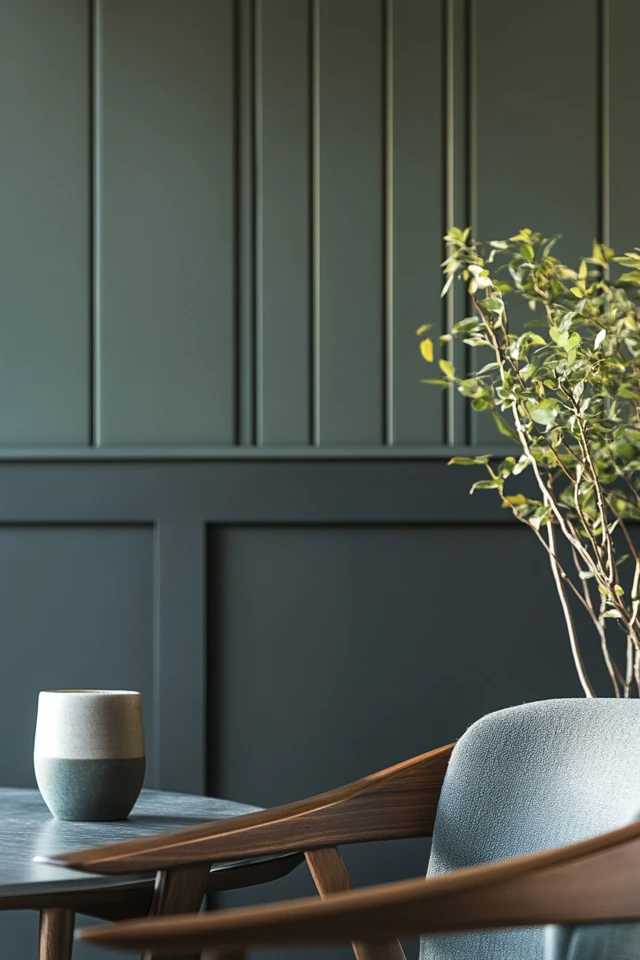
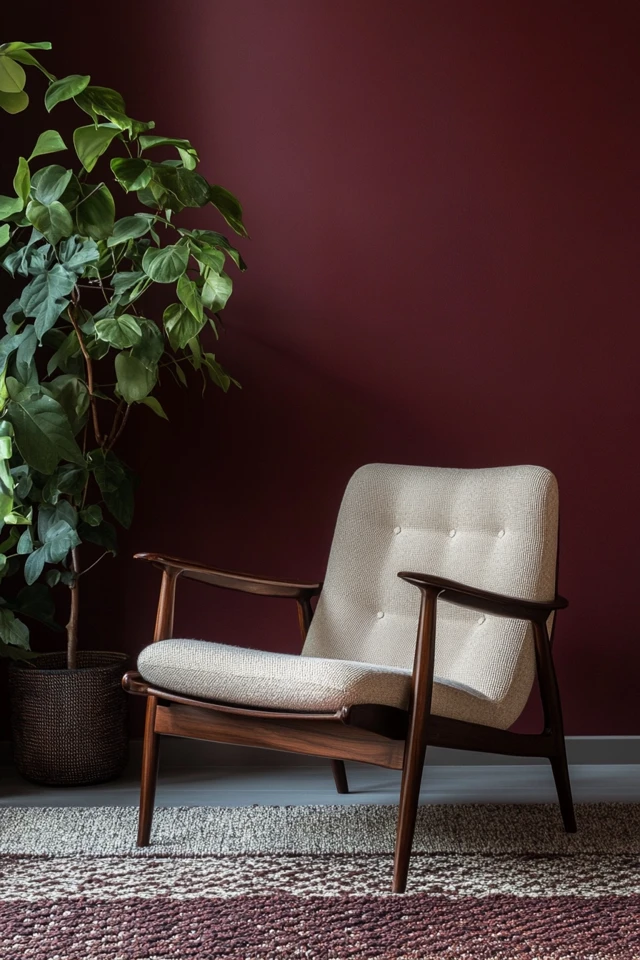
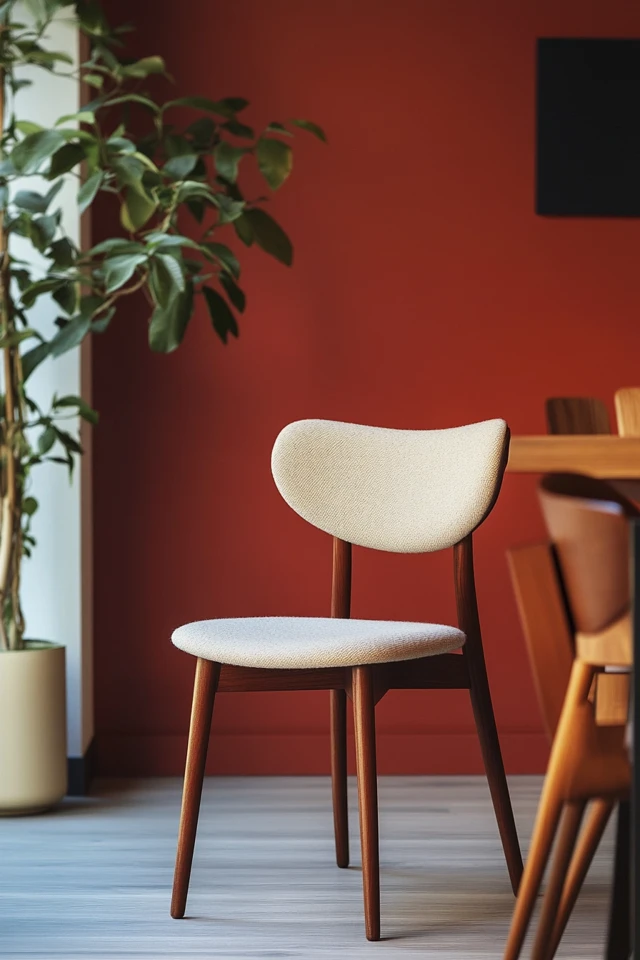
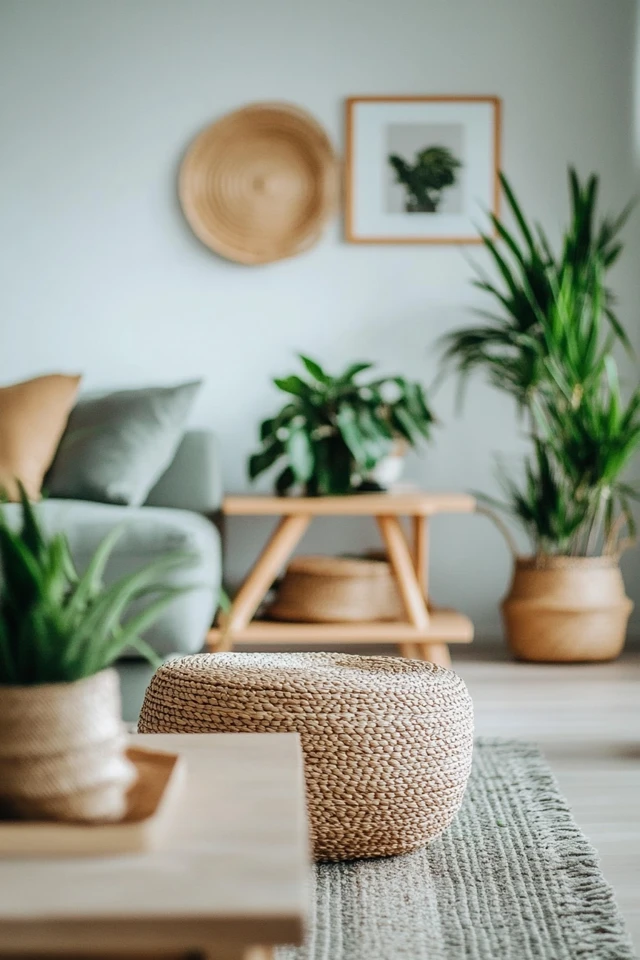
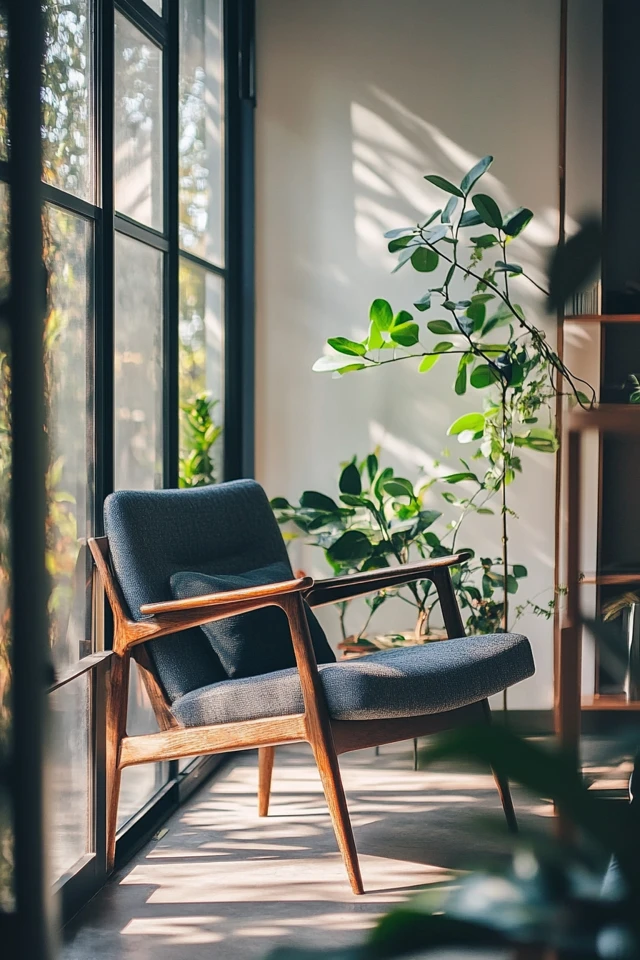
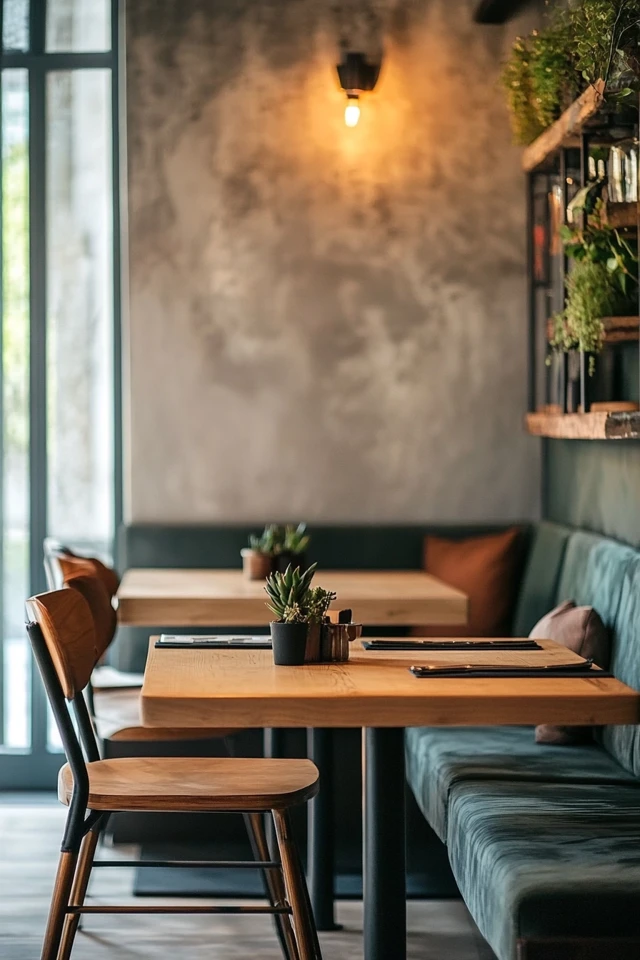
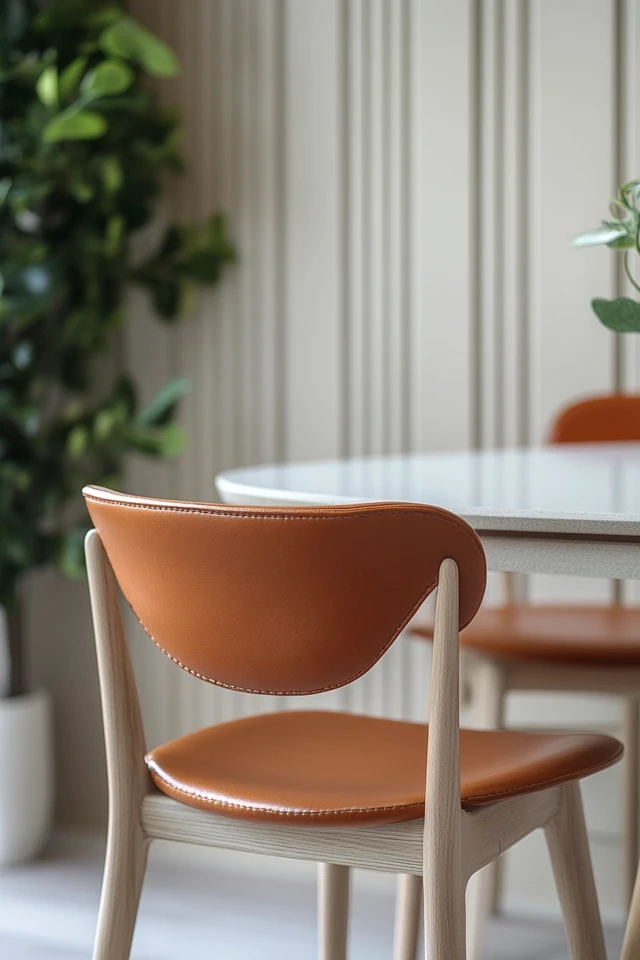
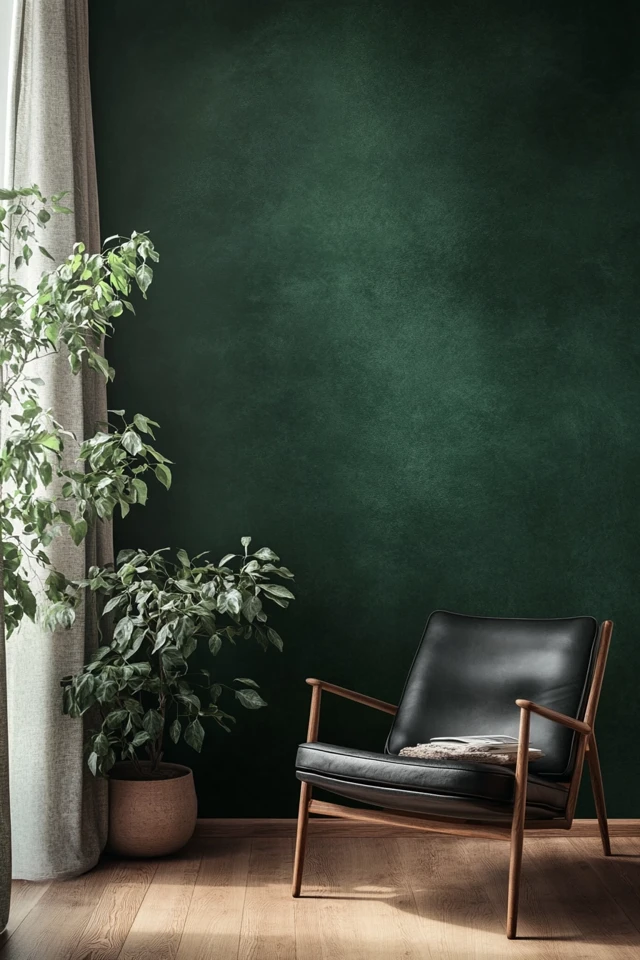
Conclusion
Blending Scandinavian and mid-century modern influences is a perfect way to create a space that feels both stylish and inviting. By combining the clean lines and bold shapes of mid-century design with the cozy textures and light tones of Scandinavian decor, you’ll achieve a harmonious balance that celebrates the best of both worlds.
So, start layering textures, simplifying your palette, and letting natural light take center stage. Before you know it, your space will feel like the perfect marriage of form and function—timeless, warm, and oh-so-inviting.
FAQs
1. Can I mix light and dark wood tones in my space?
Yes! Pair warm, dark woods (like walnut) with lighter woods (like oak) to create balance. Keep the rest of the palette neutral to tie everything together.
2. How can I add Scandinavian hygge to a mid-century modern space?
Incorporate cozy textures like wool throws, soft lighting, and candles to add warmth and comfort.
3. What are the best colors to use in a Scandinavian-mid-century mix?
Stick to a neutral base (white, gray, beige) and add earthy tones or muted accent colors like sage green or dusty blue.
4. How do I keep the space from looking too cold or stark?
Add natural materials like wood, greenery, and textured fabrics to bring warmth and depth to the room.
5. What’s the biggest mistake to avoid when mixing these styles?
Overcrowding the space. Both styles value simplicity, so keep decor and furniture minimal to maintain a clean, cohesive look.

